The mystery and allure of space have always captured the human imagination, leading us to reach for the stars and explore the vast unknown. Among these adventures, the Apollo missions stand out, not just for their historic achievements but also for the intriguing accounts of unidentified flying objects (UFOs) reported by the astronauts themselves. This exploration into the historical accounts, visual evidence, NASA’s stance, and the swirling theories offers a comprehensive look into a topic that bridges the gap between science and speculation. It’s about looking beyond the black and white and considering the endless possibilities that space presents, including those moments that leave even the most seasoned astronauts scratching their helmets in wonder.
Contents
Historical Accounts of UFOs in Apollo Missions
What Did Apollo Astronauts Actually Witness?
Heading to the moon isn’t just a walk in the park, and the Apollo astronauts sure have stories to tell. Ever wondered what these space pioneers actually experienced up there? Well, buckle up, because we’re diving into the astounding sights and experiences shared by Apollo astronauts. From the epic Apollo 11 to the final Apollo 17 mission, each journey brought back tales that seem straight out of a sci-fi novel, but trust me, it’s all real!
-
Stunning Earth Views
First things first: the view. Imagine looking out your window and seeing Earth suspended in space, a vibrant blue marble amidst the vast, black cosmos. The Apollo astronauts couldn’t get enough of this spectacle. They described Earth as a beautiful, fragile-looking orb, glowing against the darkness of space. This unique perspective, often called the “Overview Effect,” profoundly impacted them, shifting their understanding of our planet’s vulnerability.
-
The Magnificent Desolation of the Moon
Buzz Aldrin, Apollo 11 astronaut, famously described the lunar surface as “magnificent desolation.” The moon’s eerie, silent landscape, with its vast craters and mountains, was unlike anything they’d experienced on Earth. The sheer stillness of it all — no wind, no sounds, just absolute silence — was both awe-inspiring and haunting.
-
The Lunar Sunrise and Sunset
The Apollo astronauts were among the few to witness the surreal scene of a lunar sunrise and sunset. Unlike Earth’s gradual transitions, the moon’s horizon transformed swiftly from total darkness to light due to the lack of an atmosphere. The sun appeared as a bright, unfiltered orb, casting sharp, long shadows across the lunar surface. This dramatic shift was not only a photographer’s dream but left a lasting impression on the astronauts.
-
Moon Dust Everywhere
Let’s talk about moon dust — this stuff got everywhere! The fine, powdery soil, known as regolith, clung to everything: suits, boots, equipment. Its abrasive nature made it a bit of a nuisance. Yet, in the vacuum of space, this dust kicked up by lunar landers or astronauts’ activities hovered eerily before settling back down, a sight not possible on wind-blown Earth.
-
Earthrise: A Perspective-Change
Perhaps one of the most transformative sights was that of Earthrise. Captured famously by Apollo 8 astronaut Bill Anders, this image showed Earth peering over the moon’s horizon. This breathtaking perspective highlighted our world’s beauty and isolation in the infinite expanse of space. It’s an image credited with kickstarting the environmental movement, showing us the preciousness of our home planet.
-
Weightlessness Wonders
And then there’s the fun of weightlessness. Sure, it presents challenges, like dealing with floating tools (and astronauts!), but the novelty of moving in a 3D space where up and down are relative was a constant wonder. Whether it was doing flips with ease or the delicate ballet of docking spacecraft, the zero-gravity environment added a layer of adventure to the missions.
-
The Final Frontier Feels Closer
Each Apollo mission brought back invaluable scientific data and insights, but perhaps more importantly, they brought back stories — human experiences that transformed these astronauts’ views on life, Earth, and humanity’s place in the universe. These firsthand accounts make the distant and cold vastness of space feel a bit warmer, a bit more reachable.
Hearing these stories from the Apollo astronauts themselves, we get a glimpse into what it’s like beyond our blue sky, touching the very essence of exploration and discovery. It’s a reminder of how much more is out there, waiting for us to reach out and experience the wonders for ourselves. Who knows what future astronauts will witness as we set our sights on Mars and beyond? One thing’s for sure: the universe is filled with surprises, and we’re just getting started uncovering them.
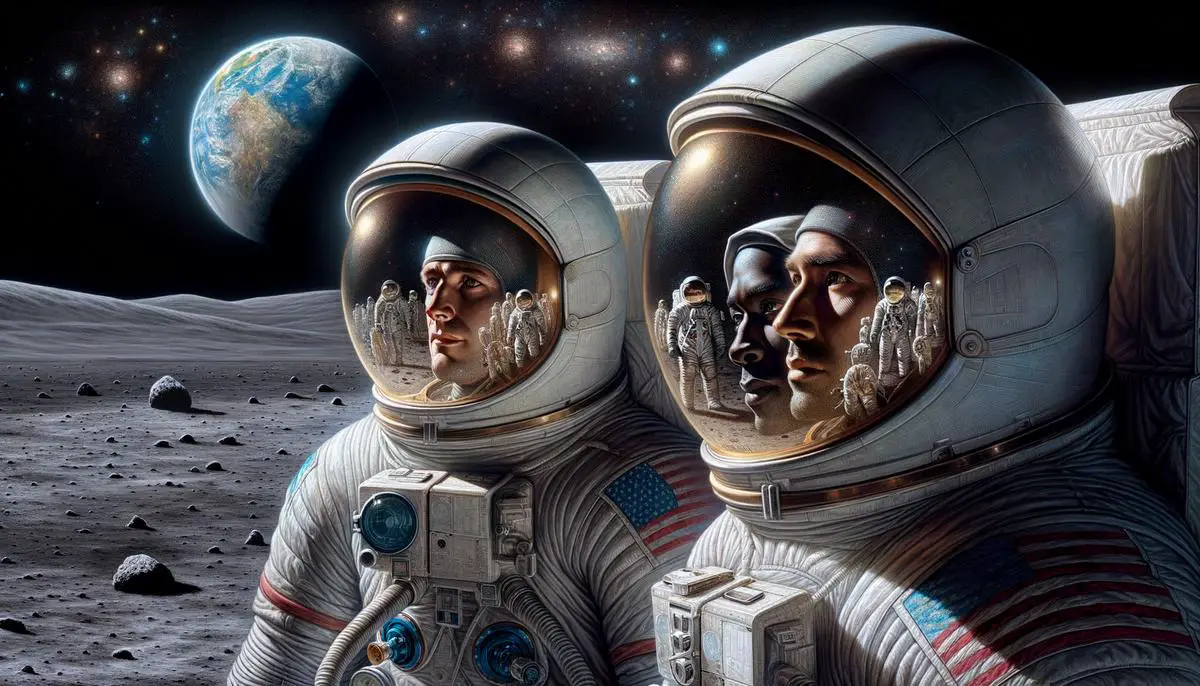
Analysis of Visual Evidence
Moon Rocks and Mysteries
Diving deeper into the Apollo missions, we can’t overlook the amazing collection of moon rocks brought back to Earth. These rocks gave scientists unique insights into the moon’s composition and history. Imagine holding a piece of another world in your hands! This was a groundbreaking moment for science, making us reconsider our place in the universe. But let’s not stop at rocks; there’s something even more tantalizing that catches our eye.
UFOs and Unexplained Phenomena
Here’s where things get really interesting. Among the thousands of photos taken during the Apollo missions, some have sparked wild theories and heated debates. Are there unidentified flying objects (UFOs) lurking in the background of these historical shots? Let’s examine the evidence without jumping to conclusions.
Some enthusiasts argue that certain images capture shapes and anomalies that can’t be explained as mere tricks of light or shadows. These mysterious objects appear too symmetrical or move in patterns that don’t fit with natural explanations. But before we jump on the alien spacecraft bandwagon, it’s crucial to approach this with a critical eye.
Experts in photography and space phenomena offer alternative explanations, pointing out that space is full of debris, ranging from satellite remnants to natural meteoroids. Additionally, the photographic equipment used during the Apollo missions had limitations and could produce artifacts or distortions under extreme conditions in space.
The Great Debate
So, where does this leave us in the UFO debate? On one side, believers in extraterrestrial visitation view these photographs as compelling evidence. They argue that amidst the vastness of space and the advancements of other potential civilizations, it’s not only possible but likely that we’re being observed.
Skeptics, on the other hand, caution against jumping to fantastical conclusions. They emphasize the importance of scientific rigor and remind us that extraordinary claims require extraordinary evidence. This healthy skepticism is a cornerstone of scientific inquiry, ensuring that we don’t get carried away by our imagination.
Zooming In on Specific Cases
In some photographs, experts have been able to debunk alleged UFO sightings by identifying the objects as parts of the spacecraft itself or reflections from lunar modules. In other instances, detailed analysis has shown that what seemed like mysterious objects could be explained by photographic anomalies.
Yet, a handful of photos continue to puzzle experts and amateurs alike. These images contain elements that so far resist clear explanation, serving as fuel for ongoing investigation and debate. It’s these unresolved mysteries that keep the flame of curiosity alive, pushing us to explore further and understand more.
The Bigger Picture
The Apollo missions did far more than land humans on the moon. They expanded our knowledge, challenged our understanding of the universe, and left us with a legacy of scientific inquiry that continues to this day. Among this treasure trove of data, the intriguing photos suggesting the presence of UFOs invite us to keep questioning, researching, and exploring.
In the end, whether or not the Apollo missions captured evidence of UFOs remains a matter of personal interpretation and ongoing scientific investigation. What’s undeniable is the missions’ profound impact on our understanding of space and our insatiable curiosity about what lies beyond our home planet.
Remember, the quest for knowledge is never-ending, and every question leads us closer to understanding our place in the cosmos. Whether it’s moon rocks or mysterious sightings, the Apollo missions have given us a wealth of information to ponder, and who knows what future explorations will reveal?
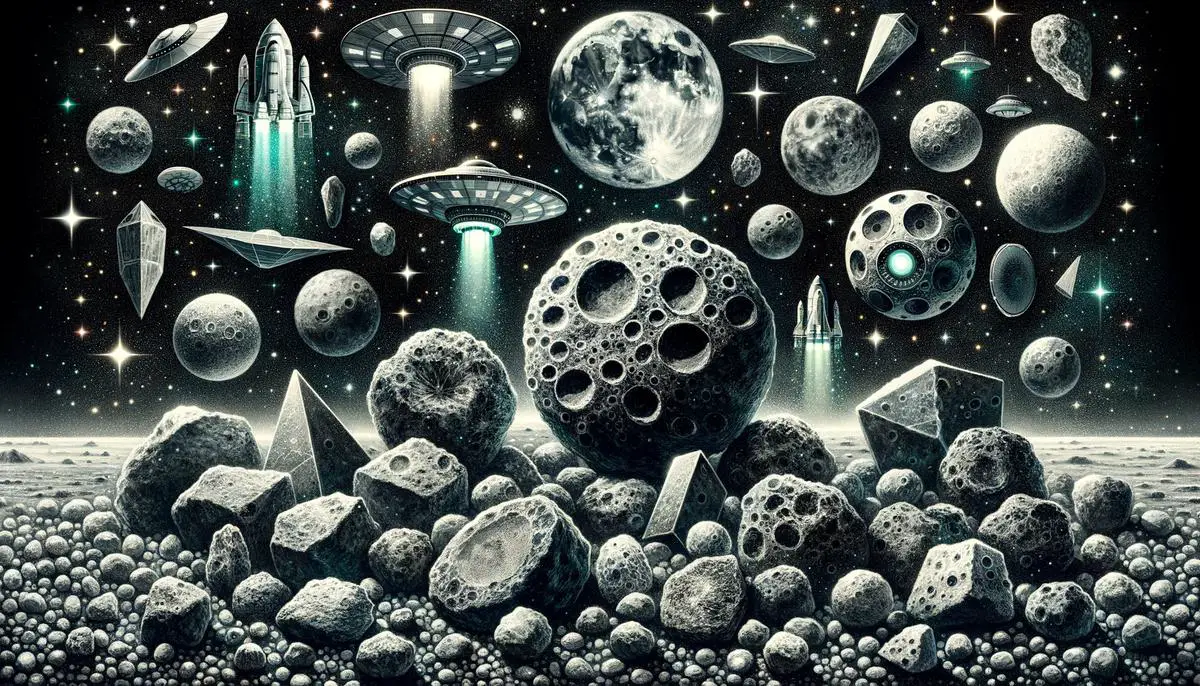
NASA’s Stance and Official Statements
As we dive deeper into the enigmatic world above us, one question that seems to pop up as frequently as stars in the night sky is: What does NASA say about UFOs during the Apollo missions? This intriguing query has both perplexed and fascinated the public and conspiracy theorists alike. So, let’s unravel this cosmic mystery together, shall we?
First off, NASA has always been a beacon of discovery, pushing the boundaries of human knowledge and our understanding of the universe. During the Apollo missions, which marked a monumental leap for mankind, astronauts were focused on exploring the moon, collecting samples, and making scientific observations. However, amidst these historic achievements, there were moments that left even seasoned astronauts scratching their helmets in wonder.
Let’s set the record straight: Yes, there have been instances where astronauts reported seeing unidentified objects or lights during their missions. But hold your space horses! Before we jump to the conclusion that we’ve got extraterrestrial fans, NASA has explanations that are a bit more down to Earth.
NASA points out that space is filled with an abundance of particles, space debris, and reflective surfaces. When you’re out there, beyond the protective embrace of Earth’s atmosphere, even a tiny fleck of paint can seem like a mysterious glowing object against the vast, dark backdrop of space. Moreover, sensory experiences in such an unfamiliar and extreme environment can play tricks on even the most trained minds.
For instance, during the Apollo missions, some astronauts reported seeing flashes of light, which were initially mysterious but later attributed to cosmic rays striking their retinas – a phenomenon now well-documented by space agencies.
So, when astronauts on Apollo missions reported seeing something they couldn’t immediately identify, NASA took a proactive approach. They investigated these sightings, often finding that the mysterious objects could be traced back to explainable phenomena such as reflections from the spacecraft’s windows, small bits of space debris, or even distant celestial bodies.
That being said, it’s important to recognize that NASA’s stance is not one of dismissal. The space agency has always maintained a commitment to scientific scrutiny and open-minded investigation. If an astronaut reports something unusual, you bet they’re going to look into it. However, with the Apollo missions and subsequent ventures into space, there hasn’t been concrete evidence to suggest that what was seen and captured in photographs were extraterrestrial UFOs.
In the grand scheme of things, the exploration of space is as much about discovering the unknown within us as it is about exploring the cosmos. As we continue our ventures into space, the line between the known and unknown will undoubtedly blur at times. NASA’s encounters with the unexplained during the Apollo missions underscore the vastness of our universe and the infinite possibilities it holds.
Remember, space is the final frontier, filled with mysteries yet to be solved, horizons yet to be explored, and questions that may lead us to answers beyond our wildest imaginations. As we follow in the footsteps of the Apollo astronauts, our journey into the cosmos is just beginning, fueled by curiosity, guided by science, and ever so often, sprinkled with a bit of cosmic wonder.
So, next time you find yourself gazing up at the night sky, remember that the universe is a place of endless discovery, and perhaps, just maybe, we’re not alone in this infinite dance of celestial bodies. But for now, according to NASA, the UFOs of the Apollo missions remain identified as nothing more out of this world than simple space oddities and reflections of our quest for understanding. Let’s keep our eyes on the stars and our minds open to endless possibilities. Who knows what we might discover next?
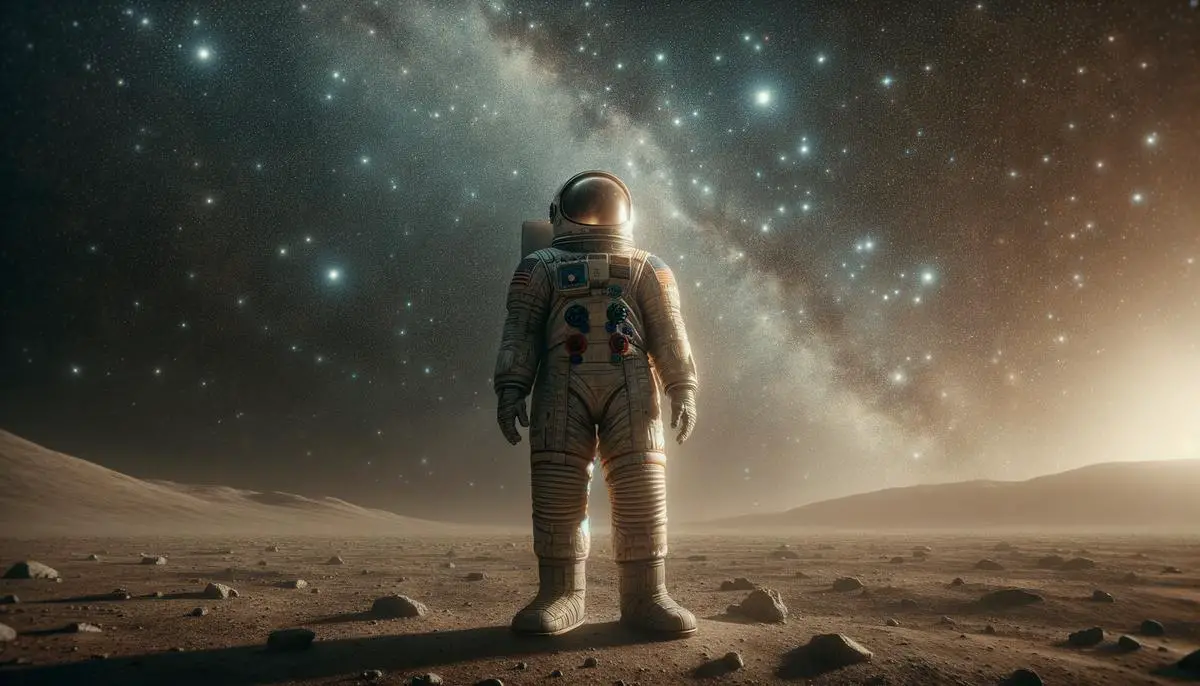
Theories and Speculations
Exploring the Unknown: Theories on UFOs in Apollo Missions
Have you ever gazed up at the night sky, marveling at the moon’s serene glow, and pondered what secrets it holds? The Apollo missions, launched by NASA, served not just to put man on the moon but to satiate our thirst for cosmic discovery. While the official records talk about the lunar surface’s stark beauty, the intriguing samples collected, and the monumental first steps for mankind, there’s a layer of mystery that still tickles the curiosity of many—unidentified flying objects (UFOs) observed during these missions. Let’s dive deep into the most compelling theories about UFOs in Apollo missions, blending science, skepticism, and the human fascination with the extraterrestrial.
The Enigma of Unidentified Spectators
Imagine floating in the vast expanse of space, surrounded by the endless dark, when suddenly, a flickering light or an unexplainable object crosses your path. Reports from astronauts during Apollo missions have hinted at such encounters, sparking a whirlwind of theories. What are these sightings? Are they mere space debris, reflections, or, as some suggest, evidence of extraterrestrial observers keenly watching humanity’s giant leaps?
Decoding the Mysteries: The Sky is Not the Limit
- **Cosmic Photobombers**: One prevailing theory suggests that what were perceived as UFOs could be pieces of cosmic debris or satellites. Space, it turns out, is not as empty as it seems. It’s littered with fragments from past expeditions, not to mention natural meteoroids. Could these be the culprits behind the mysterious sightings?
- **Tricks of Light and Shadow**: The harsh lighting conditions in space, combined with reflective surfaces of the spacecraft and the moon, can create optical illusions. Scientists propose that many UFO observations could be attributable to these tricks of light, playing hide and seek with the astronauts’ senses. The lunar horizon’s peculiar glow, the “zodiacal light,” could also be mistaken for inexplicable objects in the lunar vicinity.
- **Sensory Experiences in the Void**: The void of space is an environment unlike any other, known to have profound effects on human perception. Isolation and the absence of familiar reference points can enhance sensory sensitivity, possibly leading to misinterpretations of mundane phenomena as anomalous or extraterrestrial.
- **A Reflection on Humanity’s Curiosity**: At the heart of these UFO sightings lies an unquenchable curiosity and an eternal hope that we’re not alone in the universe. The interpretations, albeit varied, underline our inherent desire to connect and understand the cosmos. Every light misjudged as a UFO whispers the age-old question: is anybody out there?
NASA’s Stance and the Path Forward
NASA has historically approached UFO reports with a blend of openness and skepticism, investigating plausible explanations within the confines of known science. While no evidence directly supports the extraterrestrial hypothesis in the context of Apollo missions, the agency continues to advocate for scientific rigor and inquiry.
The essence of space exploration hinges on our curiosity and willingness to entertain the myriad possibilities the universe holds. The unexplained sightings during the Apollo missions serve as a reminder of the vastness of space’s unknowns and the exhilarating journey of discovery that lies ahead.
So, as we continue to sift through data and gaze up at the stars, we embrace the mysteries and the tantalizing prospect of one day uncovering the truths hidden in the cosmos. Whether the UFOs observed were distant satellites, optical illusions, or something far more profound, they undeniably enrich the tapestry of our quest to explore and understand the boundless universe.
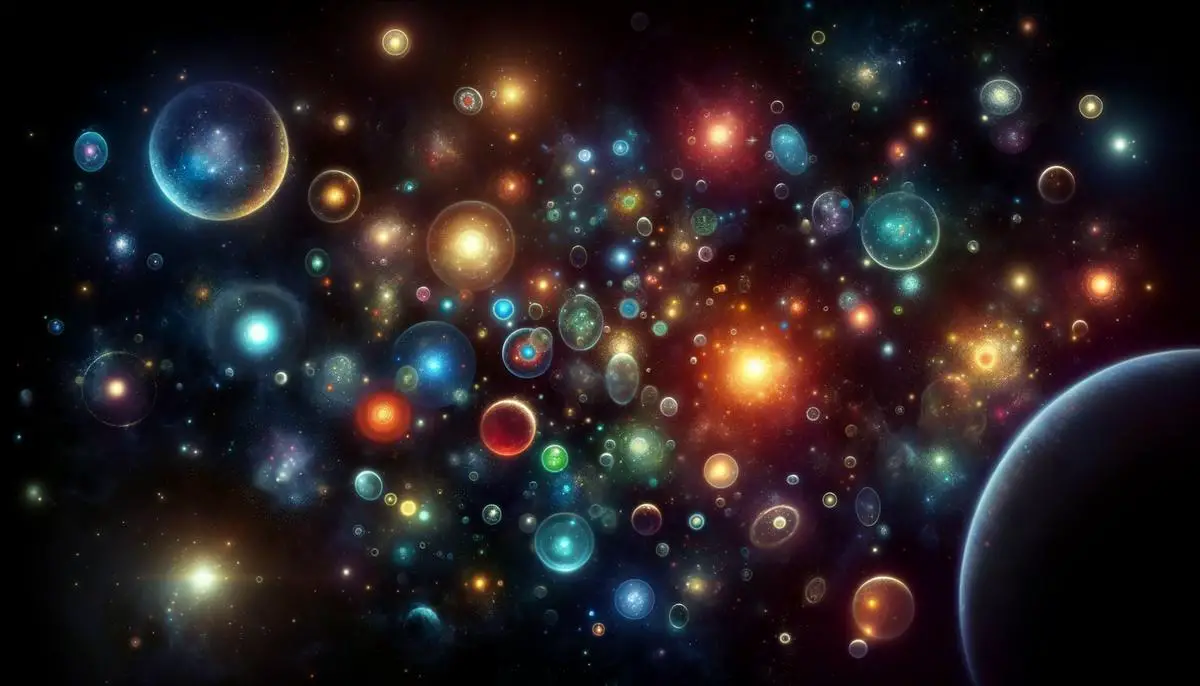
Impact on Future Space Exploration
UFO sightings have sparked curiosity and intrigue around the globe, especially when linked to space missions. As we delve into how these mysterious observations have influenced subsequent space explorations, let’s unlock the puzzle piece by piece.
When astronauts set out on space missions, they’re not just charting the unknown expanses of the cosmos; they’re also entering a realm ripe with mysteries, including UFO sightings. These sightings during missions, like those reported in the Apollo era, do more than just stir public imagination—they also shape the scientific and exploratory strategies of space agencies like NASA.
Following reports of unidentified objects or lights by astronauts, space agencies have been nudged towards a more vigilant approach to mission planning and execution. This vigilance isn’t just about keeping an eye out for extraterrestrial spacecraft; it’s about understanding the diverse variables that come into play in the unique environment of space. The sightings during Apollo missions pushed NASA to enhance their observational and recording systems. High-definition cameras and advanced tracking technologies are now standard in missions to capture and analyze anomalies that could provide valuable insights into our universe’s workings.
Moreover, these sightings have broadened the scope of how missions are researched and developed. Understanding that space is not just a vacuum, but a dynamic environment filled with cosmic debris, radiation, and other phenomena, has led to improvements in spacecraft durability and in astronaut training. Crew members are now better prepared for the unexpected, equipped with knowledge on how to distinguish possible cosmic phenomena from technical malfunctions or optical illusions.
Investigations into UFO sightings have also propelled collaborative efforts with experts in various fields, from astronomers to physicists, to dissect observations and discern their nature. This interdisciplinary approach has not only enriched the scientific investigation into UFOs but also amplified the pool of knowledge around space and its countless mysteries.
The unresolved mysteries of past sightings still hover over the space exploration community, serving as a compelling reminder of how much is yet to be discovered. These enigmatic encounters reinforce the importance of maintaining an open mind. While the drive to understand might sometimes be met with more questions than answers, it’s this very quest for knowledge that propels humanity further into the cosmos.
As we continue to explore space, the influence of UFO sightings on missions is unmistakable. They remind us of the vastness of the universe and the infinitesimal part we play in it. The curiosity sparked by these sightings fuels our desire to explore, understand, and connect with the universe in ways we have yet to imagine. With every mission, we step into the unknown, ready to uncover the secrets it holds, whether they be alien in nature or merely unexplained natural phenomena. The future of space exploration is intertwined with the mysteries of UFOs, prompting us to look beyond our earthly confines and into the endless possibilities that the universe offers.
In the grand scheme, UFO sightings have been a catalyst for enhancing technological, scientific, and procedural aspects of space missions. They push the boundaries of what we know, challenge our perceptions, and inspire a relentless pursuit of understanding the cosmos. As we keep our eyes on the stars, the legacy of these sightings ensures that our journey into the unknown is as informed and awe-inspiring as it is unending.
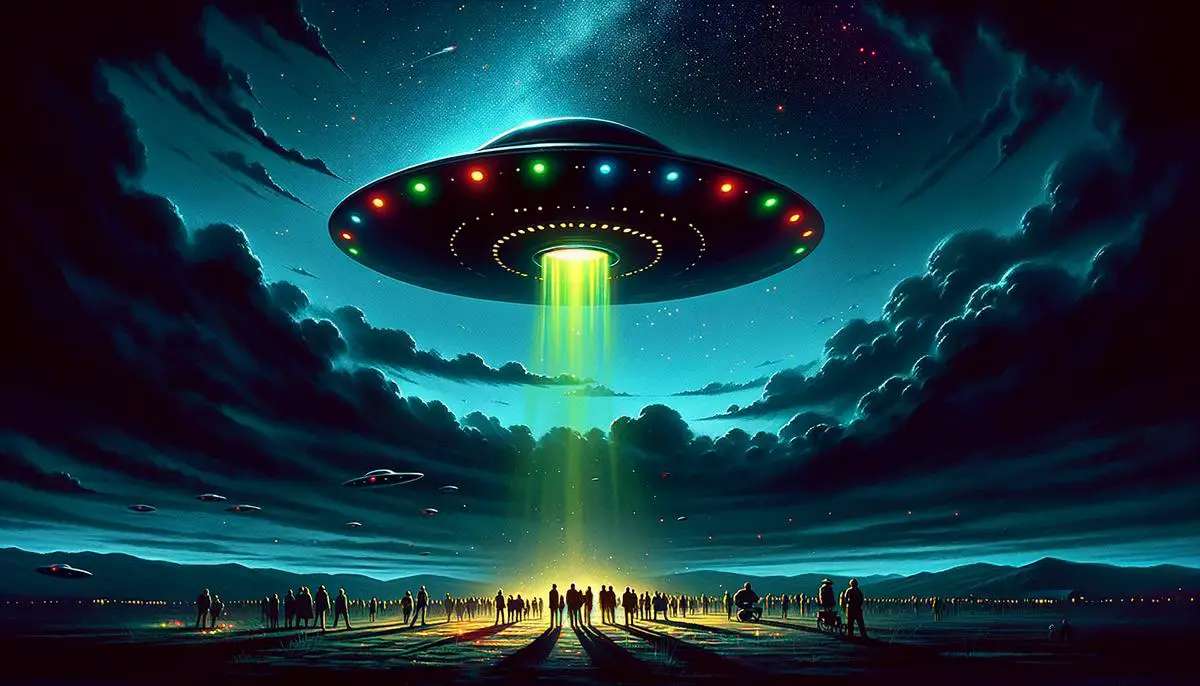
The journey through the Apollo missions and their related UFO sightings opens up a universe of questions, debates, and fascinations. As we stand on the cusp of a new era of space exploration, these historical anomalies serve not only as a curiosity but also as a reminder of the vastness and mystery of space that we’ve yet to understand. They encourage future astronauts, scientists, and dreamers to keep their eyes wide open, not just to what we understand, but also to the wonders and possible encounters that lie in the great unknown. As we continue to venture into space, the stories, evidence, and theories surrounding UFOs in the Apollo missions remind us that exploration is not just about reaching new worlds, but about expanding the horizons of our understanding.
